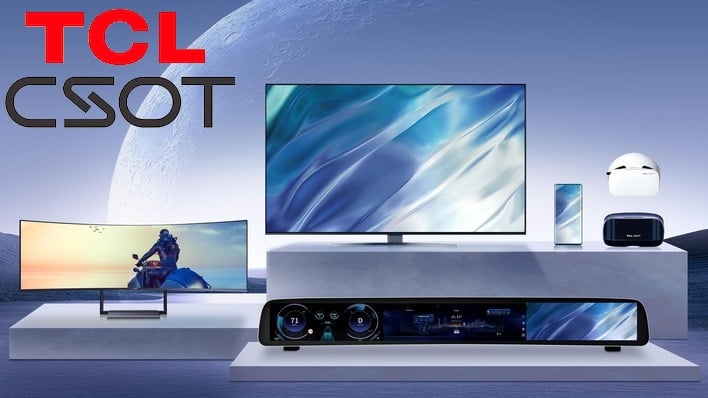If you’re reading this site, there’s a solid chance that the term “inkjet printer” sets your teeth on edge. Don’t worry, though; today’s story isn’t about unreliable plastic printers that take overpriced ink, but instead about Chinese display manufacturer TCL China Star Optoelectronics Technology (CSOT), who is using inkjet printing processes to make OLED screens.
The news comes from the Omdia Korea display conference held last week. Mr. Ming-Jon Jou, Chief of Technology Planning for TCL CSOT, made some pretty bold statements about the future of the display market and TCL’s role in it. The short version is that the company expects OLED market share to grow rapidly over the next six years, and that it it will capture a significant part of that market with its new “IJP OLED” technology.
What does “IJP” stand for? Yep — “Ink Jet Printed”. We’re not display designers, so we don’t know exactly how IJP improves OLED production, but TCL CSOT says that the process gives “more accurate printing and a side-by-side RGB structure,” which offers better image quality, lower power consumption, double the materials efficiency, and “a 50% reduction in light loss due to internal reflection”, which in turn results in a 50% improvement in light output.
If accurate, that will translate to brighter and clearer OLEDs, with improved resolution, contrast, and color saturation. TCL CSOT also says that power consumption is down and product lifespan are up, too, although it doesn’t give numbers for those values.
Perhaps the most exciting part of Mr. Jou’s statements is that IJP OLED apparently also allows for a 20% reduction in total cost, a 30% cut to product development time, and even a reduction in process carbon emissions. These benefits are the key innovations that will supposedly help OLEDs begin to catch up to LCDs in terms of market share.
So these innovations will come to big, expensive TVs first, right? No, actually—TCL CSOT says that its efforts in this field are “concentrated on medium-sized display applications, such as commercial monitors, laptop displays, and specialized products in medical.” The company presented the device above—a 14″ laptop with a 120-Hz 2880×1800 screen—as an example product produced with the new process. TCL CSOT says it can display 99% of the DCI-P3 colorspace, which is quite impressive.
One thing Mr. Jou didn’t say is when displays with these advancements would be finding their way to market. However, considering that the company said late last year that it would be ramping up its IJP OLED production this year, we wouldn’t be surprised if these panels start showing up in new monitors and laptops sooner than later.


